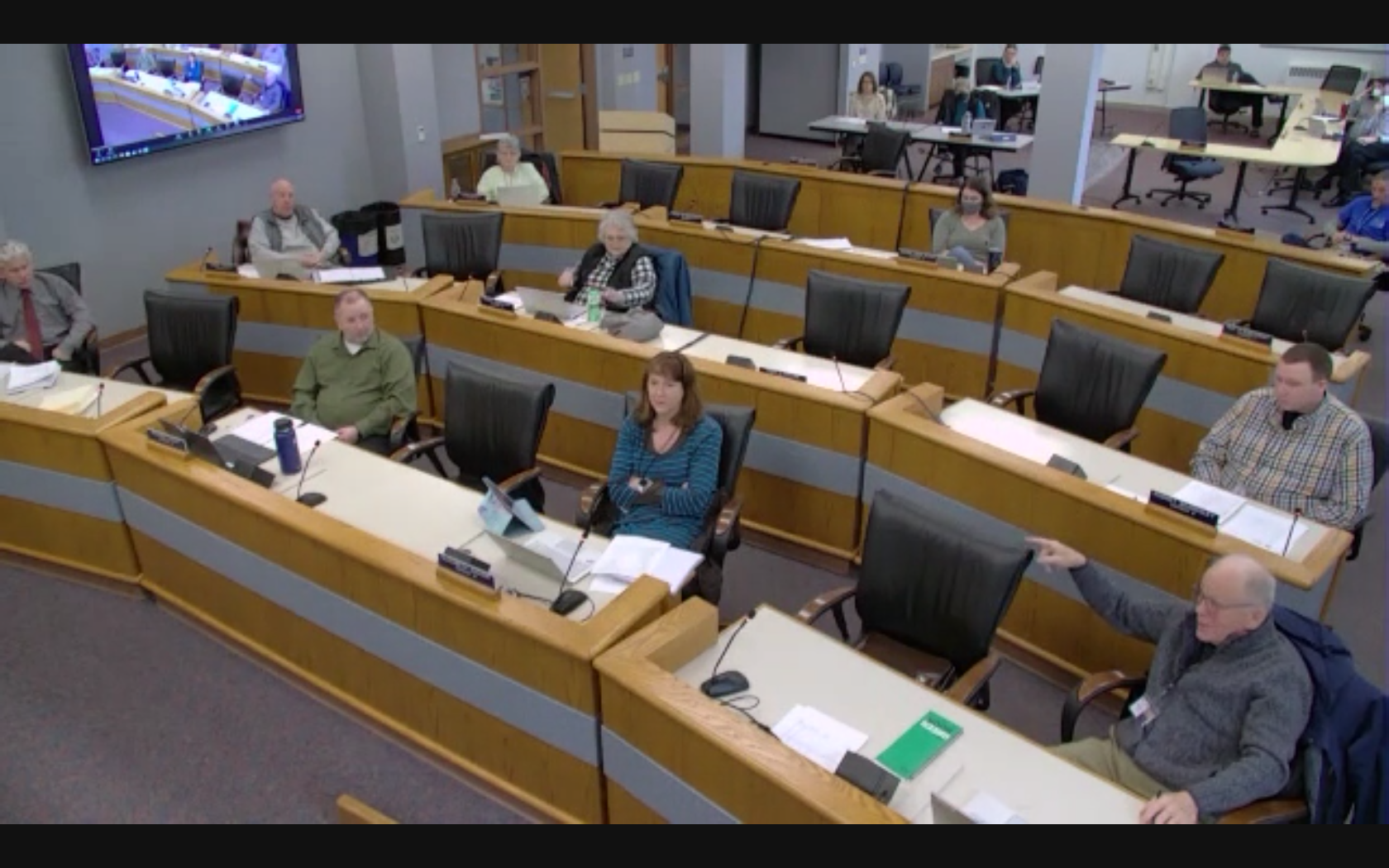Part of a series on how Door County’s use of $5.3 million in federal funding could affect social and economic issues in the community.
The finance committee of the Door County Board of Supervisors on Wednesday advanced a proposal that would give county staff more leeway to move forward with projects that use American Rescue Plan funding while maintaining County Board oversight over how that money is spent.
The resolution, which now moves to the full County Board for a vote at its Feb. 22 meeting, lays out five priority areas for the county’s use of the more than $5.3 million it is allocated under the 2021 federal law.
Those five priorities are affordable housing; broadband internet; environmental issues; health and human services; and public health, protection and safety. They include all of the projects the county has proposed for use of the federal funding.
The committee amended the resolution to add a sixth category, reserve funds, to allow more flexibility as projects in the five priority areas develop.
The committee vote comes after the County Board last month initially reviewed the county’s proposals for using the federal funding. The county has put forward plans for the funding that would bolster home-based child care; create a new sober living facility; create a new revolving loan fund for affordable housing construction and help to fund a new affordable housing development in Sister Bay; fund new groundwater testing and invasive species control; cover some initial education costs for emergency services personnel; and install new address signs county-wide.
Also Wednesday, the finance committee voted to advance a resolution to formally approve the groundwater testing and invasive species control projects. That resolution also will be up for a vote at the County Board meeting next week.
Giving staff more flexibility
County staff leaders have said they felt limited in their ability to pursue and develop the projects using federal funding without certainty about the County Board’s direction regarding the funding. Some of the projects, such as the affordable housing development in Sister Bay and the purchase of a building to house the new sober living facility, are time-sensitive.
The resolution advanced Wednesday would give county staff more flexibility on the dollar amounts used for the projects. It informally allocates funding into “buckets” for each priority area, county administrator Ken Pabich said at the meeting, giving staff the discretion to decide specifically how to use that funding and exactly how much funding is required.
Each project still would go through the county’s traditional oversight and approval process once it is more defined, Pabich said. The appropriate oversight committee would first review the project, followed by votes of the finance committee and full County Board to formally allocate the funding required.
Using the sober living facility project as an example, Pabich said the resolution would give county Health and Human Resources (HHS) director Joe Krebsbach the ability to make an offer on a building, with the offer pending County Board approval. In addition, if the cost of a building for the sober living facility turns out to be less than expected, HHS staff could put the excess funding toward other priority areas, such as improving mental health services.
The funding totals for some of the projects have changed since the proposals initially were put forward last month, due in part to some previous uncertainty about the timeline under which the funding must be spent.
The money must be used for costs incurred since March 3, 2021. It must be obligated by the end of 2024 and must be spent by the end of 2026. The proposals initially only included expenses through 2024. Pabich said the county’s understanding now is that the funding can be used to cover expenses for ongoing projects through 2026, as long as the funding is allocated earlier.
The resolution advanced Wednesday also increased the approximate funding totals set aside for some areas, such as health and human services, in order to allow possibly covering additional priorities that were not included in the county’s initial proposals. Those changes brought the total funding set aside up to the full $5,374,185 the county will receive.
There was some discussion and disagreement among the committee about where to find the money to add a “reserve funds” category to the resolution.
Pabich initially suggested reducing the amounts set aside for environmental issues and health and human services. Both of those areas’ funding totals had been increased since the initial January proposals.
Supervisor Alexis Heim Peter, who represents part of the City of Sturgeon Bay, opposed reducing funding for those areas. Heim Peter made a motion intended to allow the County Board flexibility to fund the address signs project from the county’s cash reserves and to use the federal funding set aside for that project as a “reserve funds” category instead.
Heim Peter’s motion was defeated in a 4-3 vote. A motion encompassing Pabich’s original suggestion then passed.
Other notes
Also Wednesday, the committee discussed a proposal to provide bonus payments to all county employees for one year, with one $100 payment per quarter for each employee.
That discussion came after the county’s Health and Human Services Board recommended bonus or retention payments for county Public Health staff, in recognition of the work those staff members have done during the pandemic.
Pabich said the change to provide bonuses to all county employees came because the County Board’s administrative committee, when it reviewed the proposal, was not comfortable excluding other workers whose jobs had been affected by the pandemic, such as those in emergency services.
Krebsbach said he disagreed with that change.
“If we try to compare the change in job for anyone else in this organization outside of Public Health, I believe we are missing the boat,” he said. “The impact on those ladies that worked in Public Health for the last two years was profound.”
Pabich said the issue would have to come before the administrative committee again and suggested revisiting the issue at that point.
The committee also voted to advance two resolutions in support of Door County municipalities’ grant applications to the Public Service Commission of Wisconsin for funding toward broadband internet expansion.
The grant applications and the county’s support of them are part of an effort to establish county-wide broadband access, as laid out in a 2021 report commissioned by the Door County Economic Development Corporation. That report recommended establishing a “fiber to the premises” broadband network, in which fiber optic connections are made to each individual home or business, Pabich said.
One grant application comes from the towns of Clay Banks, Forestville, Nasewaupee, Sturgeon Bay and Sevastopol and would work with Charter Communications. The other application comes from the town of Baileys Harbor and would work with Nsight Teleservices.
As part of the grant applications, Pabich said, municipalities and the internet providers they partner with are expected to raise 50 percent of the cost of a broadband project, with the remaining 50 percent to be funded by the grant. The resolutions advanced Wednesday reflect the county government’s commitment to contribute $25 per dwelling connected toward broadband projects county-wide, Pabich said.
The county has proposed setting aside $1 million of the federal American Rescue Plan funding for broadband expansion efforts.

